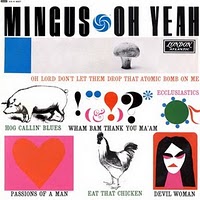 That Mingus had in mind to do something different on this record can be divined by the fact that he plays piano instead of bass here. And he sings … badly. Plus he hires both Roland Kirk and Booker Ervin to play sax — and if you can think of two more disparate players, send your answers on a postcard to me. The end result is one of Mingus’ earthiest, bluesiest, craziest and, well, most unhinged albums; if the songwriting isn’t up to, say, Ah Um, it makes up for it in sheer loopiness. “Passions of a Man” is the most avant-garde and complicated track here, perfectly balanced by the sleazy R&B of “Eat That Chicken”. And who can disagree with the sentiments of “Oh Lord Don’t Let Them Drop That Atomic Bomb On Me”? Unsung hero: Dannie Richmond. Again. –Neal
That Mingus had in mind to do something different on this record can be divined by the fact that he plays piano instead of bass here. And he sings … badly. Plus he hires both Roland Kirk and Booker Ervin to play sax — and if you can think of two more disparate players, send your answers on a postcard to me. The end result is one of Mingus’ earthiest, bluesiest, craziest and, well, most unhinged albums; if the songwriting isn’t up to, say, Ah Um, it makes up for it in sheer loopiness. “Passions of a Man” is the most avant-garde and complicated track here, perfectly balanced by the sleazy R&B of “Eat That Chicken”. And who can disagree with the sentiments of “Oh Lord Don’t Let Them Drop That Atomic Bomb On Me”? Unsung hero: Dannie Richmond. Again. –Neal
Jazz
Billy Cobham “Spectrum” (1973)
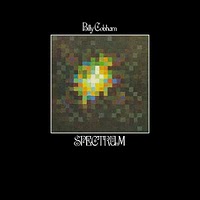 I might be one of the few people who ventured into this album as a Deep Purple fan more than anything else. I’d read that Tommy Bolin’s best work could be found on this album so I wanted to see what all the fuss was about. Since then I’ve found out some more about Mr. Cobham and from “Spectrum” alone, I’m impressed. The band sound really tight on this album and every track bursts with energy. The first track is an absolute mad dash to the end with great soloing and frenetic drumming, but my favorite tracks are “Stratus” and “Red Baron”. Both of these songs have really cool, laid back grooves and the interplay between guitar, keyboard and drums is delightful. After entering into “Spectrum” as a Tommy Bolin fan, I left as a Jan Hammer fan. The keyboard solo’s here are breath-taking, stealing focus from Bolin who is no slouch himself. –Tom
I might be one of the few people who ventured into this album as a Deep Purple fan more than anything else. I’d read that Tommy Bolin’s best work could be found on this album so I wanted to see what all the fuss was about. Since then I’ve found out some more about Mr. Cobham and from “Spectrum” alone, I’m impressed. The band sound really tight on this album and every track bursts with energy. The first track is an absolute mad dash to the end with great soloing and frenetic drumming, but my favorite tracks are “Stratus” and “Red Baron”. Both of these songs have really cool, laid back grooves and the interplay between guitar, keyboard and drums is delightful. After entering into “Spectrum” as a Tommy Bolin fan, I left as a Jan Hammer fan. The keyboard solo’s here are breath-taking, stealing focus from Bolin who is no slouch himself. –Tom
Miles Davis “Water Babies” (1976)
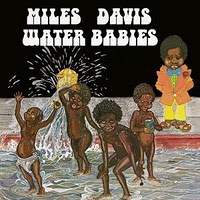 For an album of leftover tracks from the Quintet’s late 60s sessions, this is surprisingly cohesive. Saxophonist Wayne Shorter pens all these tracks and “Two Faced” is the best of the bunch, a stunning, mind melting improvisation featuring Chick Corea providing ethereal washes of electric piano. That track alone is worth getting this album. “Water Babies” and “Sweat Pea” sound radically rearranged from the versions available on Shorter’s solo albums. The former sounds extended and has more percussive elements, the latter transformed into a lovely ballad rather, than the short piece found on Super Nova. –Neal
For an album of leftover tracks from the Quintet’s late 60s sessions, this is surprisingly cohesive. Saxophonist Wayne Shorter pens all these tracks and “Two Faced” is the best of the bunch, a stunning, mind melting improvisation featuring Chick Corea providing ethereal washes of electric piano. That track alone is worth getting this album. “Water Babies” and “Sweat Pea” sound radically rearranged from the versions available on Shorter’s solo albums. The former sounds extended and has more percussive elements, the latter transformed into a lovely ballad rather, than the short piece found on Super Nova. –Neal
John Coltrane “My Favorite Things” (1961)
 If ever there was a document to the genius of Trane it is the title track here. He takes a perky little Rogers and Hammerstein number and infuses it with Indian influences and extends it to thirteen of the most intense minutes of listening pleasure ever. No wonder it become Trane’s most requested and loved piece. This album features three other standards given the Trane treatment but lets be honest My Favorite Things is the highlight. The LP also introduces us to the Soprano sax that Trane so favored at times. A hard instrument to love unless in the right hands he plays it with his usual ferocity and vigor and makes it sing and cry like no else has ever done. Also, listen to the work of McCoy Tyner on the title track. Has he ever sounded better. His work on this track makes the hairs on the back of my neck stand up every time I hear it. –Jon
If ever there was a document to the genius of Trane it is the title track here. He takes a perky little Rogers and Hammerstein number and infuses it with Indian influences and extends it to thirteen of the most intense minutes of listening pleasure ever. No wonder it become Trane’s most requested and loved piece. This album features three other standards given the Trane treatment but lets be honest My Favorite Things is the highlight. The LP also introduces us to the Soprano sax that Trane so favored at times. A hard instrument to love unless in the right hands he plays it with his usual ferocity and vigor and makes it sing and cry like no else has ever done. Also, listen to the work of McCoy Tyner on the title track. Has he ever sounded better. His work on this track makes the hairs on the back of my neck stand up every time I hear it. –Jon
Alice Coltrane “Ptah The El Daoud” (1970)
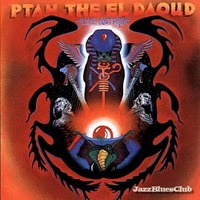 You can tell from the album cover that this isn’t going to be your average jazz album. In fact, it’s an essential avant-garde album to own. It’s proof that John Coltrane’s wife, Alice, was very talented. Ptah, The El Daoud is a unique opportunity to hear tenor saxophone legends Joe Henderson and Pharoah Sanders together. The first thing that strikes you when the record starts is that Ron Carter has so much power on bass. You can almost picture the damage that his playing is doing to your speakers. He’s incredible. My only complaint is that you can’t hear Alice Coltrane play piano and harp at the same time. She’s great on both instruments. If only she had two more arms! –Rob
You can tell from the album cover that this isn’t going to be your average jazz album. In fact, it’s an essential avant-garde album to own. It’s proof that John Coltrane’s wife, Alice, was very talented. Ptah, The El Daoud is a unique opportunity to hear tenor saxophone legends Joe Henderson and Pharoah Sanders together. The first thing that strikes you when the record starts is that Ron Carter has so much power on bass. You can almost picture the damage that his playing is doing to your speakers. He’s incredible. My only complaint is that you can’t hear Alice Coltrane play piano and harp at the same time. She’s great on both instruments. If only she had two more arms! –Rob
Jaco Pastorius “Jaco Pastorius” (1976)
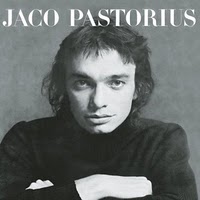 To say that Jaco Pastorius lived a tumultuous life filled with incredible highs and lows would be an understatement. Cursed with mental illness and drug and alcohol problems, his life came crashing down to a violent end in 1987 after an altercation with a bouncer outside of a Florida club. I’m actually stunned just reading about this incident. The bouncer in question only received four months in prison for essentially beating a man to death. But I guess we don’t know the whole story. I hadn’t heard bass playing quite like the way Pastorius played it before I’d heard him play on Weather Report and Pat Metheny albums. He really could make the bass “sing” and sound divine. This debut solo record highlights these qualities with fast flashy playing alternating with slow contemplative passages. Pastorius had his musical roots in R&B, so the inclusion of Sam and Dave’s vocals on the funky “Come On, Come Over” is something of an homage to these roots. Another interesting highlight are the steel drums on “Opus Pocus”, which really add texture to the song. Overall, this album is a must for jazz and fusion fans, as well as a necessary lesson for electric bass students. –Neal
To say that Jaco Pastorius lived a tumultuous life filled with incredible highs and lows would be an understatement. Cursed with mental illness and drug and alcohol problems, his life came crashing down to a violent end in 1987 after an altercation with a bouncer outside of a Florida club. I’m actually stunned just reading about this incident. The bouncer in question only received four months in prison for essentially beating a man to death. But I guess we don’t know the whole story. I hadn’t heard bass playing quite like the way Pastorius played it before I’d heard him play on Weather Report and Pat Metheny albums. He really could make the bass “sing” and sound divine. This debut solo record highlights these qualities with fast flashy playing alternating with slow contemplative passages. Pastorius had his musical roots in R&B, so the inclusion of Sam and Dave’s vocals on the funky “Come On, Come Over” is something of an homage to these roots. Another interesting highlight are the steel drums on “Opus Pocus”, which really add texture to the song. Overall, this album is a must for jazz and fusion fans, as well as a necessary lesson for electric bass students. –Neal
Andrew Hill “Black Fire” (1964)
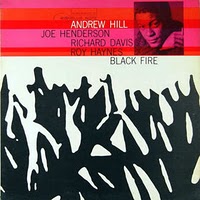 Almost from the beginning, Andrew Hill has been a driving force of avant-garde jazz. To this very day he’s still at it, having won a best album award for Dusk in the year 2000 and multiple Best Jazz Composer awards recently. While Hill set the standard for all avant-garde jazz with the release of Point of Departure, Black Fire was his first masterpiece. He didn’t create the genre but he has certainly almost carried it on his back. This album features what may be my favorite quartet as of yet: Andrew Hill, Richard Davis, Roy Haynes and Joe Henderson. Hill’s style is hard to pinpoint. It’s sort of a cross of Bill Evans and Thelonious Monk, varying from classy to erratic. Joe Henderson had just gotten out of the military when this was recorded. Black Fire definitely features some of his finest tenor saxophone work. On drums, Roy Haynes is, for lack of better description, the original Tony Williams. His versatility is awesome. From what I can tell, if a person wanted to record a slightly strange jazz album in the 60s, bearing in mind that they couldn’t get Charles Mingus, Richard Davis was the next logical selection. Ron Carter would be after Davis and then somebody random if all else failed. Two of the seven songs are piano/drums/bass numbers: “Subterfuge” and “Tired Trade”. “Subterfuge” is perhaps my favorite jazz trio song. Start to finish, “Pumpkin” to the avant-garde Latin feeling “Land of Nod”, this is a classic. –Rob
Almost from the beginning, Andrew Hill has been a driving force of avant-garde jazz. To this very day he’s still at it, having won a best album award for Dusk in the year 2000 and multiple Best Jazz Composer awards recently. While Hill set the standard for all avant-garde jazz with the release of Point of Departure, Black Fire was his first masterpiece. He didn’t create the genre but he has certainly almost carried it on his back. This album features what may be my favorite quartet as of yet: Andrew Hill, Richard Davis, Roy Haynes and Joe Henderson. Hill’s style is hard to pinpoint. It’s sort of a cross of Bill Evans and Thelonious Monk, varying from classy to erratic. Joe Henderson had just gotten out of the military when this was recorded. Black Fire definitely features some of his finest tenor saxophone work. On drums, Roy Haynes is, for lack of better description, the original Tony Williams. His versatility is awesome. From what I can tell, if a person wanted to record a slightly strange jazz album in the 60s, bearing in mind that they couldn’t get Charles Mingus, Richard Davis was the next logical selection. Ron Carter would be after Davis and then somebody random if all else failed. Two of the seven songs are piano/drums/bass numbers: “Subterfuge” and “Tired Trade”. “Subterfuge” is perhaps my favorite jazz trio song. Start to finish, “Pumpkin” to the avant-garde Latin feeling “Land of Nod”, this is a classic. –Rob
Oliver Nelson “The Blues and the Abstract Truth” (1961)
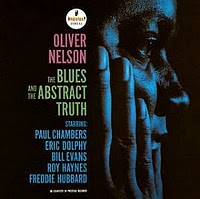 The Blues and the Abstract Truth could very easily be called part II of the Kind of Blue trilogy. Oliver Nelson used two musicians from Kind of Blue: Bill Evans and Paul Chambers. Other notable musicians here include Roy Haynes, Eric Dolphy and Freddie Hubbard. I’ve said it before and I’ll say it again: Freddie Hubbard is the best trumpet player of all time. But as usual, Eric Dolphy stands out as the star, no matter how deep an album’s lineup is. If you want to know how to distinguish between Oliver Nelson and Eric Dolphy’s playing, keep in mind that whenever somebody is playing like a complete lunatic it’s Dolphy. This album came out two years after Kind of Blue and was followed by part III and the peak of the trilogy, Speak No Evil by Wayne Shorter in 1964. Not only does the lineup improve, but the music itself gets better with every chapter. Don’t miss out on Part II or III. –Rob
The Blues and the Abstract Truth could very easily be called part II of the Kind of Blue trilogy. Oliver Nelson used two musicians from Kind of Blue: Bill Evans and Paul Chambers. Other notable musicians here include Roy Haynes, Eric Dolphy and Freddie Hubbard. I’ve said it before and I’ll say it again: Freddie Hubbard is the best trumpet player of all time. But as usual, Eric Dolphy stands out as the star, no matter how deep an album’s lineup is. If you want to know how to distinguish between Oliver Nelson and Eric Dolphy’s playing, keep in mind that whenever somebody is playing like a complete lunatic it’s Dolphy. This album came out two years after Kind of Blue and was followed by part III and the peak of the trilogy, Speak No Evil by Wayne Shorter in 1964. Not only does the lineup improve, but the music itself gets better with every chapter. Don’t miss out on Part II or III. –Rob
Julian Priester “Love, Love” (1974)
 Love, Love is a monster of an album! Despite its age (30+ years), it’s a must for anybody interested in living, breathing, unexpected music. Julian Priester was an alumnus of Blue Note, Sun Ra and most importantly for this record, of Herbie Hancock’s revolutionary Mwandishi group which recorded only three albums in its all too brief lifetime. Each of those Mwandishi albums was a brilliant melding of the cosmic and earthy, extemporisation and groove. Love, Love was recorded after Hancock dissolved his sextet in order to explore an avowedly populist angle with the hugely successful Headhunters. Together with trumpeter Eddie Henderson’s two post-Mwandishi albums, Realization and Inside Out, Love, Love represents one of the late masterpieces of a style later christened “Kozmigroov”. Although comprising two lengthy slabs of music ly intended to be heard as a suite, it’s side one that grabs the listener by the lapels and proceeds to groove remorselessly for a full nineteen minutes. Love, Love however is no feelgood piece of happy-go-lucky frippery. Rather, its relentless bass vamp is likely to plough a deep furrow through your consciousness. Spine tingling shaken percussion presages the arrival of Nyimbo Henry Franklin and Ron McClure’s basses which well up and sweep forward, singularly intent upon adhering like superglue to the groove.
Love, Love is a monster of an album! Despite its age (30+ years), it’s a must for anybody interested in living, breathing, unexpected music. Julian Priester was an alumnus of Blue Note, Sun Ra and most importantly for this record, of Herbie Hancock’s revolutionary Mwandishi group which recorded only three albums in its all too brief lifetime. Each of those Mwandishi albums was a brilliant melding of the cosmic and earthy, extemporisation and groove. Love, Love was recorded after Hancock dissolved his sextet in order to explore an avowedly populist angle with the hugely successful Headhunters. Together with trumpeter Eddie Henderson’s two post-Mwandishi albums, Realization and Inside Out, Love, Love represents one of the late masterpieces of a style later christened “Kozmigroov”. Although comprising two lengthy slabs of music ly intended to be heard as a suite, it’s side one that grabs the listener by the lapels and proceeds to groove remorselessly for a full nineteen minutes. Love, Love however is no feelgood piece of happy-go-lucky frippery. Rather, its relentless bass vamp is likely to plough a deep furrow through your consciousness. Spine tingling shaken percussion presages the arrival of Nyimbo Henry Franklin and Ron McClure’s basses which well up and sweep forward, singularly intent upon adhering like superglue to the groove.
Miles Davis “E.S.P.” (1965)
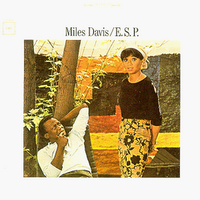 After the uncertainties of the early 1960s, the Miles Davis Quintet kept to the old repertoire but cut their music back to the bone in their live performances, then, on ESP, the first studio recording by the new Quintet with Wayne Shorter on tenor, they brought in new material and built up a new sound – then, after Miles Smiles, they cut back again, then built up a new sound with In A Silent Way, and then in the early 1970s cut back again. Whether you prefer the sparser albums, finding the essence of Davis’s music in their simpleness, or the albums with the richer ingredients, might just be a matter of taste: but I go for the fuller bodied ones and think ESP is one of the great Davis albums. Davis had been playing with this rhythm section for a couple of years and now, finally, they had found a tenor player totally suited to their music. Ron Carter is superb, building a complexity of rhythms while always keeping a strong rhythmic centre; Tony Williams is superb, building intricate patterns of rhythm (although he would be even better over the next three or four years); Herbie Hancock is superb, cutting his piano back to horn like lines (compare the version of Little One on this album with Hancock’s on his Maiden Voyage album: Hancock’s is lusher, Davis’s is starker – both are amongst the great jazz recordings of 1965); Wayne Shorter is superb – I have often heard the aggression of is playing referred to, but for me there is a great warmth in his sound, creating a satisfying contrast with Davis; and Miles Davis is superb – I have previously called his playing in the mid 1960s icy: I don’t want to imply that his music is cold, but it has the freshness of a frosty morning. The sound of the album has a wonderful balance, it has the bright lines of a Vermeer interior, the sounds having their own place but all working together with a symmetry. This is the creation of a world of clarity. –Nick
After the uncertainties of the early 1960s, the Miles Davis Quintet kept to the old repertoire but cut their music back to the bone in their live performances, then, on ESP, the first studio recording by the new Quintet with Wayne Shorter on tenor, they brought in new material and built up a new sound – then, after Miles Smiles, they cut back again, then built up a new sound with In A Silent Way, and then in the early 1970s cut back again. Whether you prefer the sparser albums, finding the essence of Davis’s music in their simpleness, or the albums with the richer ingredients, might just be a matter of taste: but I go for the fuller bodied ones and think ESP is one of the great Davis albums. Davis had been playing with this rhythm section for a couple of years and now, finally, they had found a tenor player totally suited to their music. Ron Carter is superb, building a complexity of rhythms while always keeping a strong rhythmic centre; Tony Williams is superb, building intricate patterns of rhythm (although he would be even better over the next three or four years); Herbie Hancock is superb, cutting his piano back to horn like lines (compare the version of Little One on this album with Hancock’s on his Maiden Voyage album: Hancock’s is lusher, Davis’s is starker – both are amongst the great jazz recordings of 1965); Wayne Shorter is superb – I have often heard the aggression of is playing referred to, but for me there is a great warmth in his sound, creating a satisfying contrast with Davis; and Miles Davis is superb – I have previously called his playing in the mid 1960s icy: I don’t want to imply that his music is cold, but it has the freshness of a frosty morning. The sound of the album has a wonderful balance, it has the bright lines of a Vermeer interior, the sounds having their own place but all working together with a symmetry. This is the creation of a world of clarity. –Nick
Herbie Hancock “Headhunters” (1973)
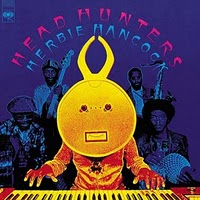 Essential jazz-funk and one the high points in the impressive career of the genius that is Herbie Hancock. Tackling jazz-funk head on and making the genre’s defining LP. Funky music with improvised solos and high level musicianship from a stellar cast of support players. Everyone who has a passing interest in jazz or funk should own a copy of this LP. For the hip hop lovers its always great to hear how many familiar samples you come across as you listen to the music. –Jon
Essential jazz-funk and one the high points in the impressive career of the genius that is Herbie Hancock. Tackling jazz-funk head on and making the genre’s defining LP. Funky music with improvised solos and high level musicianship from a stellar cast of support players. Everyone who has a passing interest in jazz or funk should own a copy of this LP. For the hip hop lovers its always great to hear how many familiar samples you come across as you listen to the music. –Jon
Duke Ellington “Far East Suite” (1967)
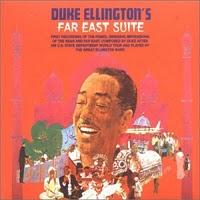 After touring the Middle and Far East, Ellington brought a little of the local music back with him and recorded Far East Suite. My first impression of Far East Suite: Oh my god. Second impression? Same. Listen to “Blue Pepper (Far East of the Blues)” and tell me with a straight face that you don’t think the exact same thing. You couldn’t do it. –Rob
After touring the Middle and Far East, Ellington brought a little of the local music back with him and recorded Far East Suite. My first impression of Far East Suite: Oh my god. Second impression? Same. Listen to “Blue Pepper (Far East of the Blues)” and tell me with a straight face that you don’t think the exact same thing. You couldn’t do it. –Rob


